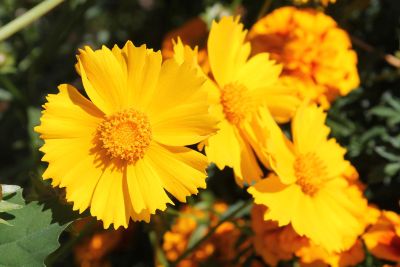Coreopsis flowers may be annual or perennial and come in a variety of heights. A member of the Asteraceae family, blooms of growing coreopsis are similar to those of the daisy. Colors of petals include red, pink, white and yellow, many with dark brown or maroon centers, which makes an interesting contrast to the petals. Coreopsis is native to the United States and 33 species are known and listed by the Natural Resources Conservation Service of USDA on their website’s plant database. Coreopsis is the state wildflower of Florida, but many varieties are hardy up to USDA plant hardiness zone 4.
How to Grow Coreopsis Plants
It is equally easy to learn how to grow coreopsis. Simply seed a prepared area of un-amended soil in spring in a full sun location. Seeds of coreopsis plants need light to germinate, so cover lightly with soil or perlite or simply press seeds into moist soil. Keep the seeds of coreopsis plants watered until germination, usually within 21 days. Care of coreopsis may include misting the seeds for moisture. Sowing plants in succession will allow for an abundance of growing coreopsis. Coreopsis plants may also be started from cuttings from spring to mid-summer.
Care of Coreopsis
Care of coreopsis is simple once flowers are established. Deadhead spent blooms on growing coreopsis often for the production of more flowers. Growing coreopsis may be cut back by one-third in late summer for a continued display of blooms. As with many native plants, coreopsis care is limited to occasional watering during extreme drought, along with the deadheading and trimming described above. Fertilization of growing coreopsis is not needed, and too much fertilizer may limit flower production. Now that you know how to grow coreopsis and the ease of coreopsis care, add some to your garden beds. You’ll enjoy this reliable wildflower for long lasting beauty and the simplicity of how to care for coreopsis flowers.
